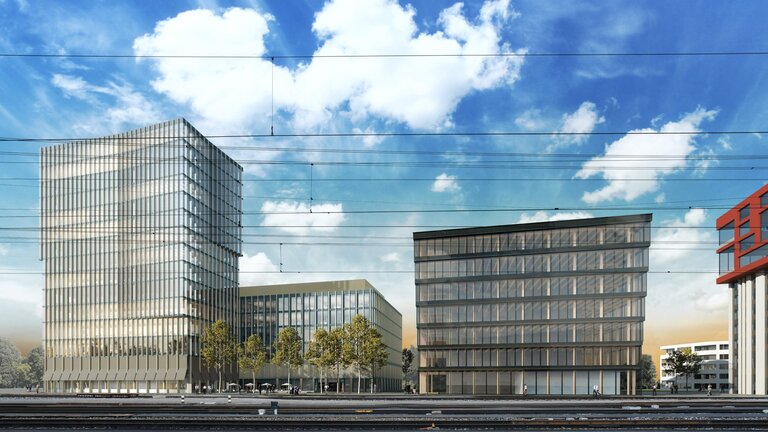This is the seventh time that the Swiss Building Documentary Service of Docu Media Schweiz GmbH has awarded the Swiss architecture prize. The award ceremony in the BIM category was held at this year's BIM Congress. The campus of Lucerne University of Applied Sciences and Arts, which won an award in the BIM Innovation category, is part of the sustainable Suurstoffi district, currently under construction close to the Risch-Rotkreuz railway station. Archobau AG is responsible for the general planning of the project. In addition to a concrete building, two of the three buildings on the campus have been designed by the joint venture Büro Konstrukt & Manetsch Meyer Dipl. Architekten ETH using a timber-hybrid construction method. One of them, at 60 meters high, has become the tallest timber skyscraper in Switzerland. Around 70 percent of the total area in these three buildings is leased to Lucerne University of Applied Sciences and Arts on a long-term basis. Drees & Sommer is using LCM® in the project to ensure a controlled construction progress and is relying on the integration of LCM®, BIM and construction logistics to meet the tight schedule. The award-winning combination of the lean model for construction processes and the digital planning method BIM improves planning reliability, transparency and construction quality.
Once digital, always digital
Digital methods flow through all planning and construction processes in the project, from early planning to implementation through the backflow of data into the 3D model. LCM® helps to schedule the processes exactly to the day. All project participants have access to a linked database in which all component-related information is collected, managed and kept up-to-date in one place.
For example, all timber components were produced in the factory directly from the BIM-based 3D model and delivered just-in-time. In addition, planning is model-based and each component is tracked, considerably cutting construction time. Benefits are derived from the fact that the real and virtual construction sites are interlinked even more closely. The current status on the construction site can be read directly off the model, such that project participants can react to obstacles at an early stage as part of monitoring. This is based on the linking of the BIM-based 3D model with a schedule created using LCM®. ‘In this way, we not only coordinate the work of around 260 project participants from about 30 different companies, but also the extensive catalog of requirements and the space allocation plan. Scheduling, logistics, acceptance processes and quality controls are all managed digitally by the project participants,’ explains Paul Schneider, Senior Project Partner at Drees & Sommer.
Living and working in the sustainable neighborhood
1,500 residents, 2,000 students, over 2,500 workplaces are features of the Suurstoffi area. It is planned as a sustainable, mixed-use, completely CO2-free district. The project plays a pioneering role due to the timber construction of some buildings. The Suurstoffi site received the Swiss Architecture Prize Arc-Award in the BIM Innovation category in 2017. At that time, the Aglaya garden high-rise received the award for its innovative online apartment configurator.
